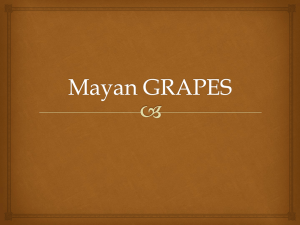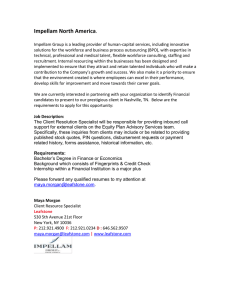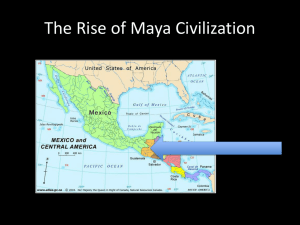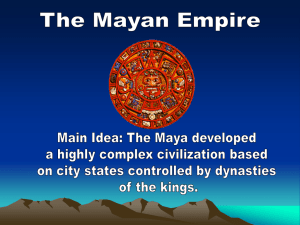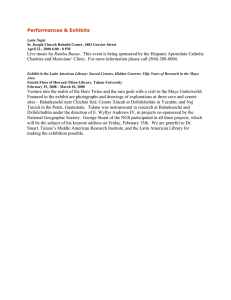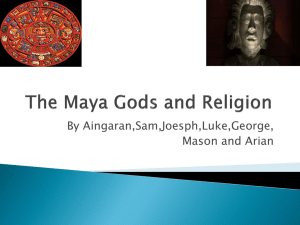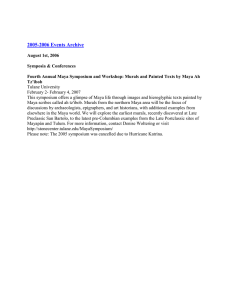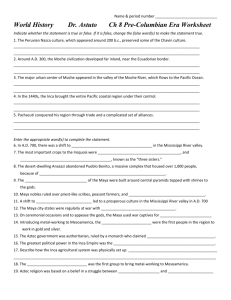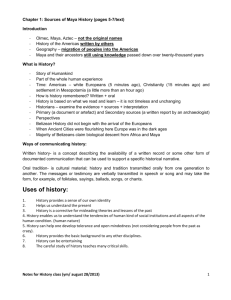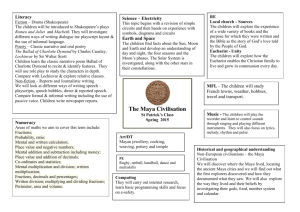Maya Kings & Cities: Civilization Overview
advertisement
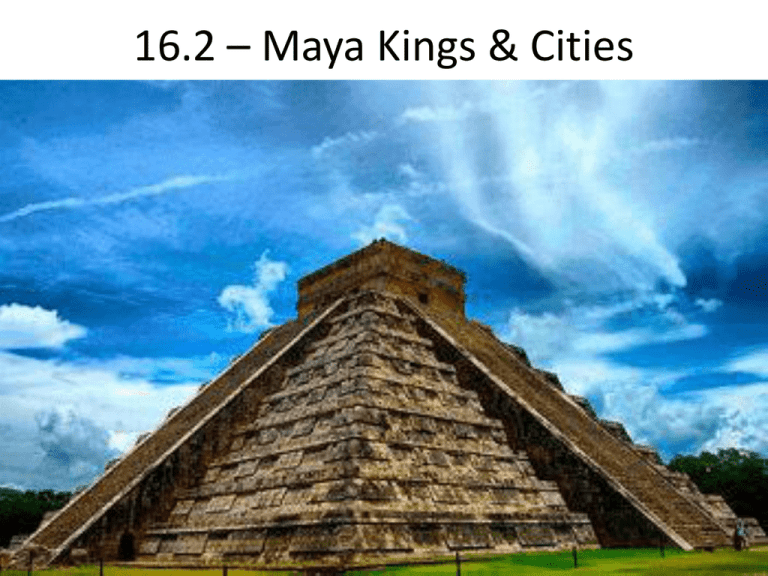
16.2 – Maya Kings & Cities • Lands stretched from southern Mexico to northern Central America • Lowlands (North) – rain forests & dry scrub • Highlands (South) – cool, mountainous • Built on Olmec influences Maya Urban Centers • 250-900 A.D. – Classic Period • Build spectacular cities – Tikal, Copán, Chichén Itza • Formed independent city-states – Ruled by god-king – Centers for trade & religion • Feature pyramids, temples, elaborate carvings, ball courts Agriculture & Trade • City-states linked by two things: – Alliances & Trade • Trade salt, shells, honey, cotton textiles, jade • Cacao acts as currency • Diet: Maize, beans, & squash • Techniques: – Slash-&-Burn – Raised beds & terraces Society • Farming & trade = Huge amounts of wealth • Social classes develop – Nobles: priests & warriors – Middle: Merchants & artisans – Bottom: peasants • Kings on top society – Holy figure, hereditary • Polytheistic – Good, evil, or both • Associated with directions & colors – – – – – North (White) South (Yellow) East (Red) West (Black) Center (Green) • Worshipped gods through food, flowers, & blood • Practiced human sacrifice – Victims into a cenote (hole) w/ gold, jade & offerings – Pleased the gods & balanced the world Religion Math & Astronomy • Religion = development of calendars, math, & astronomy • Calendars very accurate – Days lucky or unlucky b/c of gods; had to know – Two linked calendars: • 260 & 365 days • Based on positioning of the sun, moon, & planets • Math system based on 20 & included zero = accuracy • Most advanced of the ancient Americas • Consisted of ~800 glyphs (symbols) – Whole words of syllables • Record writings in a codex • Famous writings: Popol Vuh – Recounts the Maya story of creation – P. 448 Written Language Decline • Mysterious decline • Late-800s: abandon cities • Toltecs settle in lands & change culture • Warfare increases & disrupts trade • Population growth & over-farming = shortages & famine • Maya are weak & divided by time Spaniards arrive
